Dazhuang Liu
LADDER: Multi-objective Backdoor Attack via Evolutionary Algorithm
Nov 28, 2024Abstract:Current black-box backdoor attacks in convolutional neural networks formulate attack objective(s) as single-objective optimization problems in single domain. Designing triggers in single domain harms semantics and trigger robustness as well as introduces visual and spectral anomaly. This work proposes a multi-objective black-box backdoor attack in dual domains via evolutionary algorithm (LADDER), the first instance of achieving multiple attack objectives simultaneously by optimizing triggers without requiring prior knowledge about victim model. In particular, we formulate LADDER as a multi-objective optimization problem (MOP) and solve it via multi-objective evolutionary algorithm (MOEA). MOEA maintains a population of triggers with trade-offs among attack objectives and uses non-dominated sort to drive triggers toward optimal solutions. We further apply preference-based selection to MOEA to exclude impractical triggers. We state that LADDER investigates a new dual-domain perspective for trigger stealthiness by minimizing the anomaly between clean and poisoned samples in the spectral domain. Lastly, the robustness against preprocessing operations is achieved by pushing triggers to low-frequency regions. Extensive experiments comprehensively showcase that LADDER achieves attack effectiveness of at least 99%, attack robustness with 90.23% (50.09% higher than state-of-the-art attacks on average), superior natural stealthiness (1.12x to 196.74x improvement) and excellent spectral stealthiness (8.45x enhancement) as compared to current stealthy attacks by the average $l_2$-norm across 5 public datasets.
Low-Frequency Black-Box Backdoor Attack via Evolutionary Algorithm
Mar 06, 2024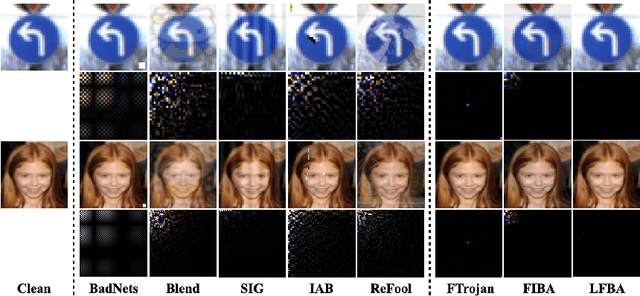
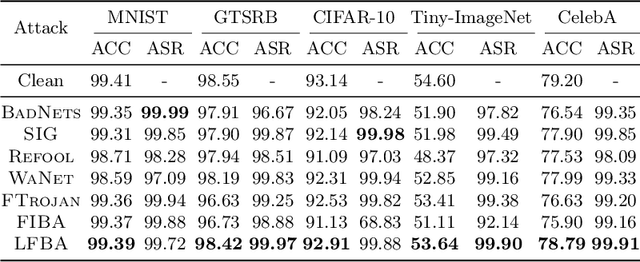


Abstract:While convolutional neural networks (CNNs) have achieved success in computer vision tasks, it is vulnerable to backdoor attacks. Such attacks could mislead the victim model to make attacker-chosen prediction with a specific trigger pattern. Until now, the trigger injection of existing attacks is mainly limited to spatial domain. Recent works take advantage of perceptual properties of planting specific patterns in the frequency domain, which only reflect indistinguishable pixel-wise perturbations in pixel domain. However, in the black-box setup, the inaccessibility of training process often renders more complex trigger designs. Existing frequency attacks simply handcraft the magnitude of spectrum, introducing anomaly frequency disparities between clean and poisoned data and taking risks of being removed by image processing operations (such as lossy compression and filtering). In this paper, we propose a robust low-frequency black-box backdoor attack (LFBA), which minimally perturbs low-frequency components of frequency spectrum and maintains the perceptual similarity in spatial space simultaneously. The key insight of our attack restrict the search for the optimal trigger to low-frequency region that can achieve high attack effectiveness, robustness against image transformation defenses and stealthiness in dual space. We utilize simulated annealing (SA), a form of evolutionary algorithm, to optimize the properties of frequency trigger including the number of manipulated frequency bands and the perturbation of each frequency component, without relying on the knowledge from the victim classifier. Extensive experiments on real-world datasets verify the effectiveness and robustness of LFBA against image processing operations and the state-of-the-art backdoor defenses, as well as its inherent stealthiness in both spatial and frequency space, making it resilient against frequency inspection.
Evolvability Degeneration in Multi-Objective Genetic Programming for Symbolic Regression
Feb 16, 2022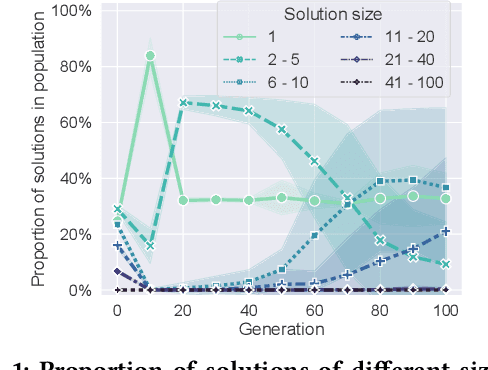
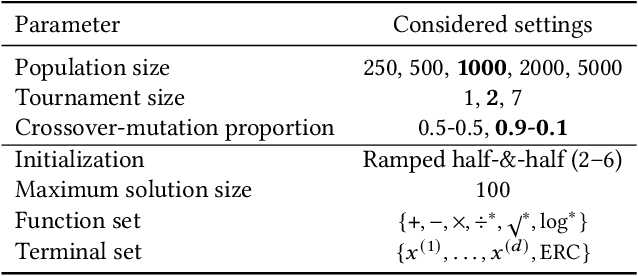
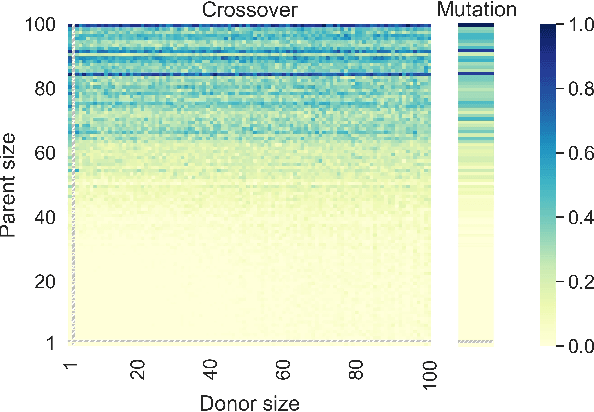

Abstract:Genetic programming (GP) is one of the best approaches today to discover symbolic regression models. To find models that trade off accuracy and complexity, the non-dominated sorting genetic algorithm II (NSGA-II) is widely used. Unfortunately, it has been shown that NSGA-II can be inefficient: in early generations, low-complexity models over-replicate and take over most of the population. Consequently, studies have proposed different approaches to promote diversity. Here, we study the root of this problem, in order to design a superior approach. We find that the over-replication of low complexity-models is due to a lack of evolvability, i.e., the inability to produce offspring with improved accuracy. We therefore extend NSGA-II to track, over time, the evolvability of models of different levels of complexity. With this information, we limit how many models of each complexity level are allowed to survive the generation. We compare this new version of NSGA-II, evoNSGA-II, with the use of seven existing multi-objective GP approaches on ten widely-used data sets, and find that evoNSGA-II is equal or superior to using these approaches in almost all comparisons. Furthermore, our results confirm that evoNSGA-II behaves as intended: models that are more evolvable form the majority of the population.
 Add to Chrome
Add to Chrome Add to Firefox
Add to Firefox Add to Edge
Add to Edge